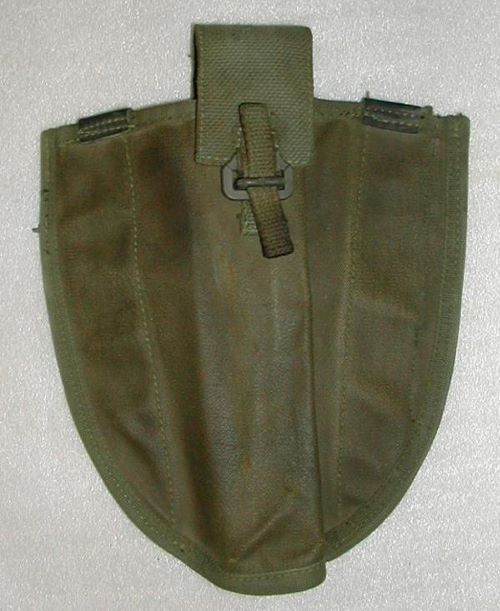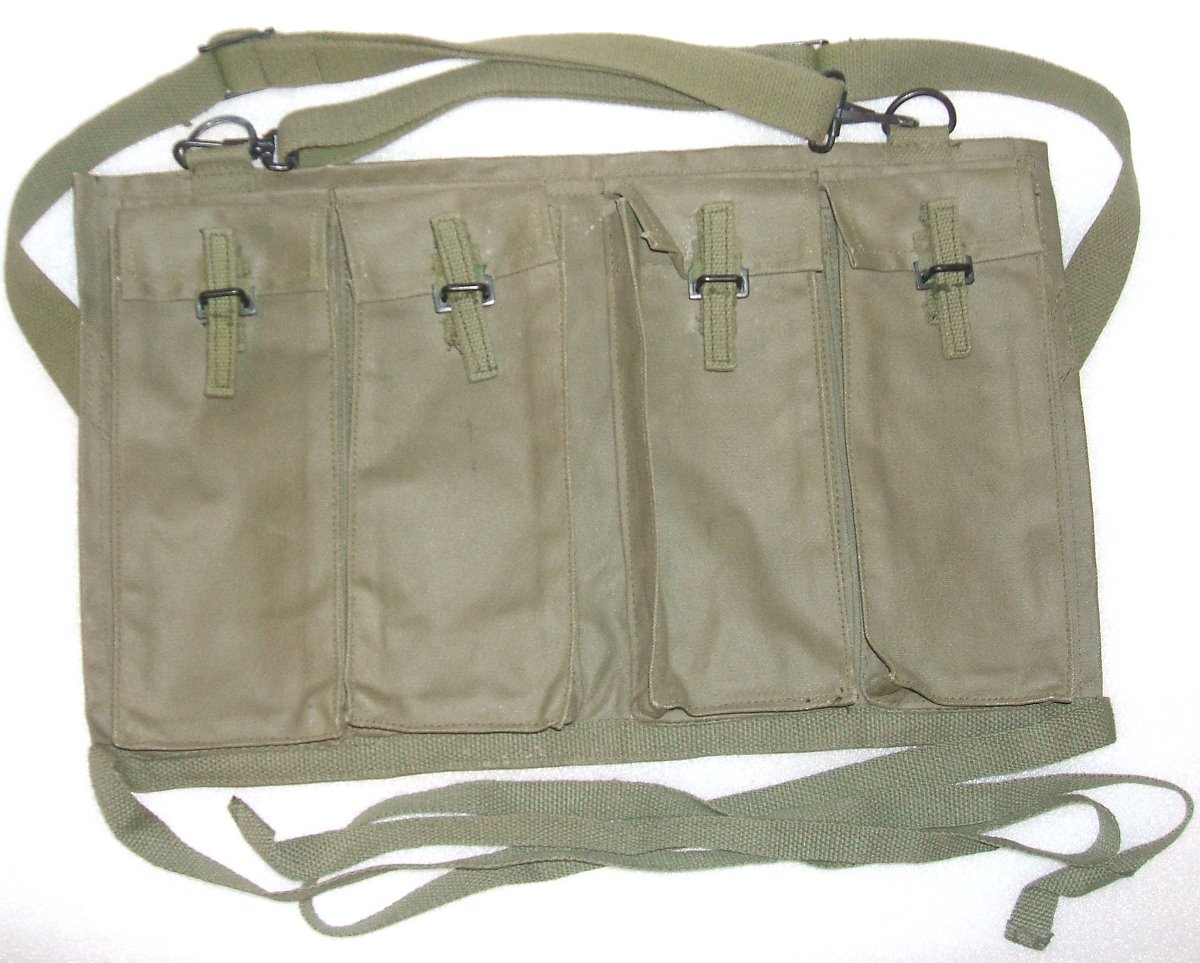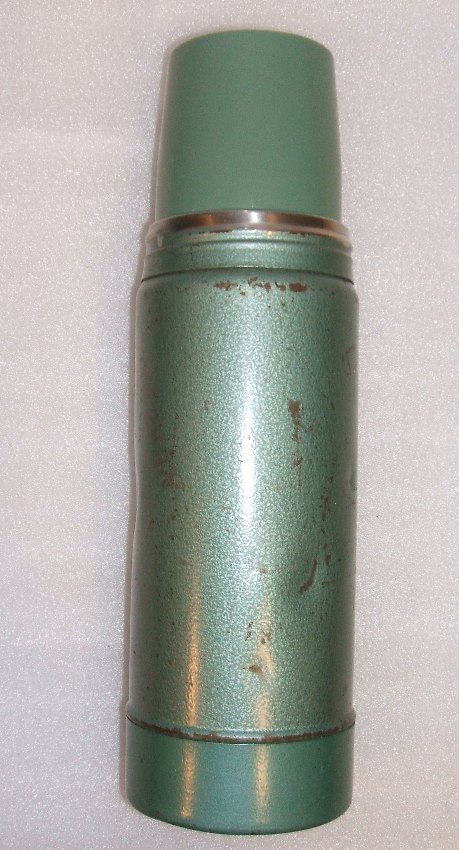

And Associated Items

In the early 1960s a totally new design of load carrying equipment was developed in conjunction with the new combat uniform. The new equipment was designated Web Equipment, 1964 Pattern (WE'64). WE'64 employed plastic buckles and fittings with hook and loop (Velcro) fasteners and was designed to be simple to adjust and easy to decontaminate. The belt and braces were made of a heavy rot resistant OD Green cotton web material. Individual pouches were coated with a green plastic waterproofing, this tended to flake or peel off after some use. WE'64 was not widely issued to the Regular Force until 1966 - 67 and was not issued to the Reserves until the late 1970s.
WE'64 was superior to the 1951 pattern in ease of assembly and adjustment, but in most other respects was a failure and disliked by soldiers. Equipment tended to slide out of position on the belt, and over time the hook and loop fasteners lost their ability to remain secured especially when wet.
The most obvious fault was the absence of magazine pouches, but this was a design failure. The concept of the combined Combat uniform and WE'64 was based on the premise that the infantry soldier would ride into battle in an Armoured Personnel Carrier and dismount to engage the enemy. Combat would require only weapons, ammunition, water and light rations. Additional clothing and personal gear required for living in the field would be carried in the APC. This concept also assumed that the soldier would not be required to march long distances on foot or carry heavy loads. Magazines for the FN C1 rifle were intended to be carried in specially designed pockets on the Combat uniform. Magazines for the FN C2 light machinegun were carried in a 4 pocket "chest pack". There was no provision made for carrying magazines for the C1 submachinegun, they were to be simply stuffed into any available uniform pocket.
In the field, it was common to see belts and tabs held together with green guntape or metal keepers from the 1951 Pattern waistbelt. The "Y Strap" braces were thin and unpadded and dug into the shoulders. Some reserve soldiers modified their web by replacing the Y Strap with American M1956 or M1967 load bearing suspenders.
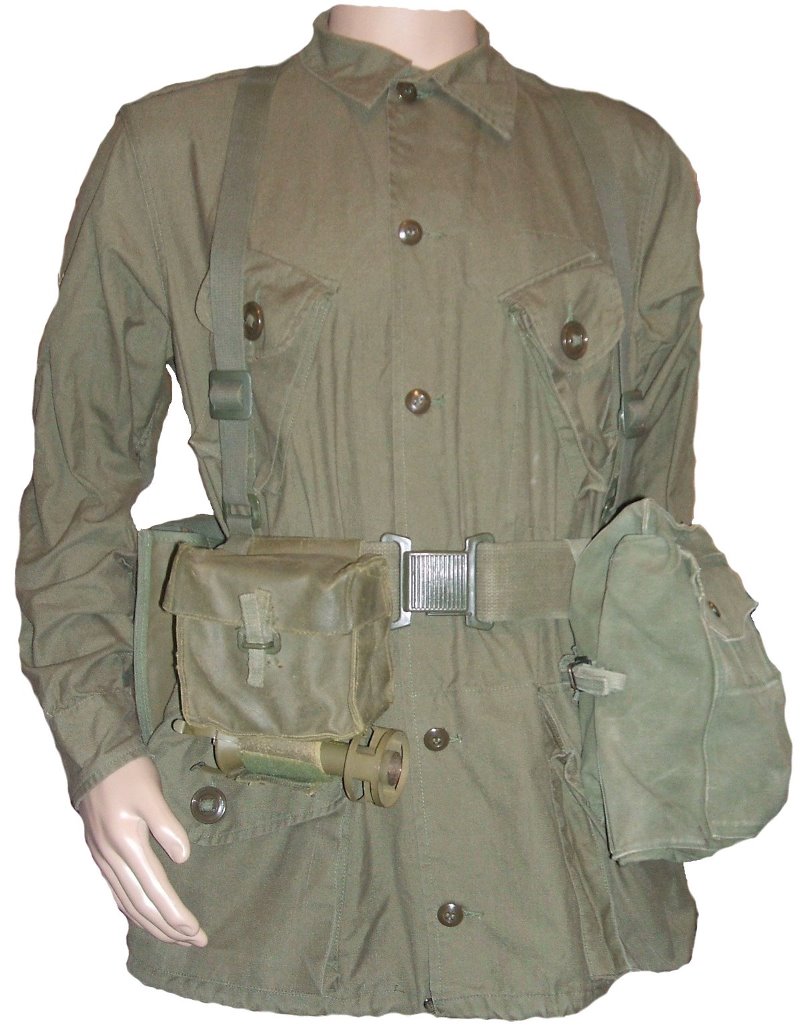
The WE'64 set employed by Canadian MPs in the field normally consisted of a 2 1/4" (5.7 cm) wide waistbelt with green plastic buckle, supported by a "Y Strap" brace. The position of the equipment items on the belt in the field could vary according to individual preference or Unit Orders, however the bayonet was always worn over the left hip. In hot climates, two canteens were sometimes worn. In the early 1970s it was common practice to attach a First Field Dressing to the Y strap and occasionally a second dressing was taped to the waistbelt or worn under the helmet cover. Pistols were not normally carried in the field by MPs, the C1 submachinegun was the standard weapon. No magazine carriers were produced for the WE'64, rifle magazines were carried in purpose designed pockets in the Combat uniform. SMG magazines were carried either in the Combat pockets or in 1951 Pattern pouches attached to the web belt.
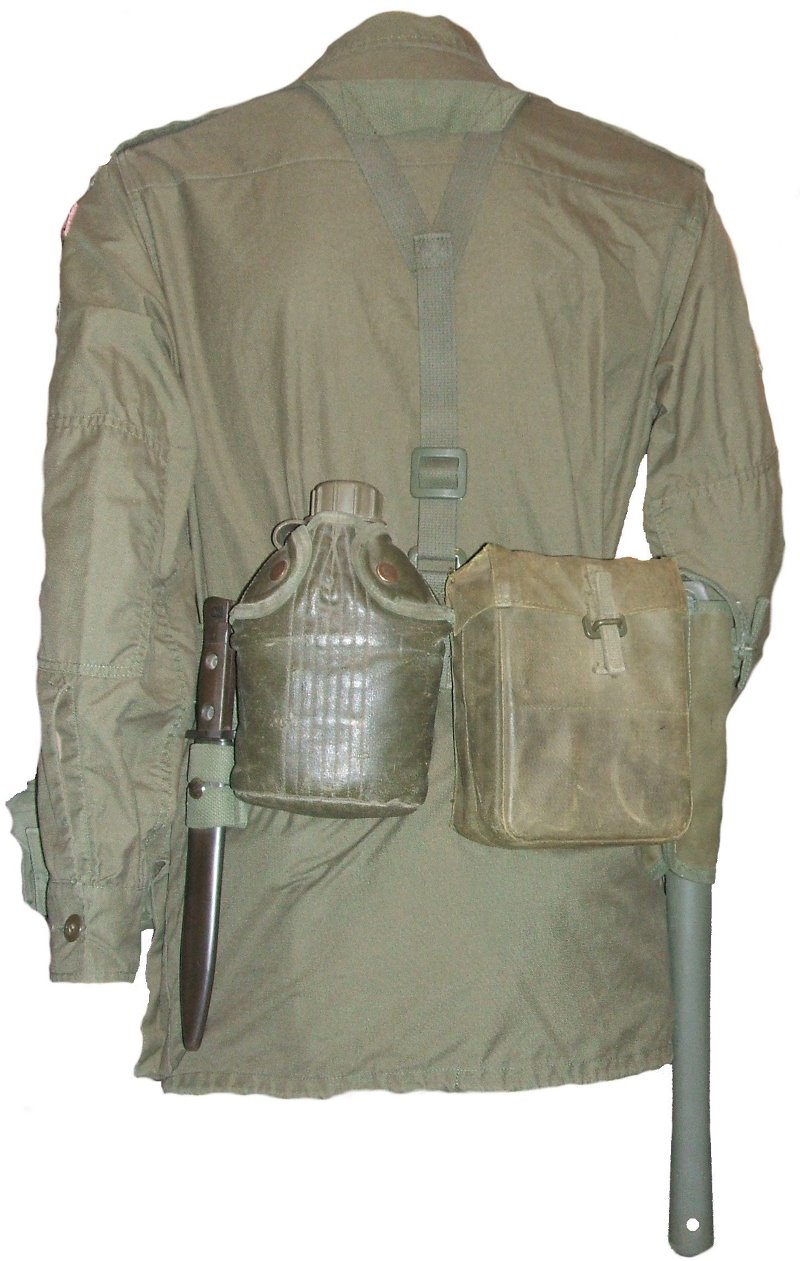

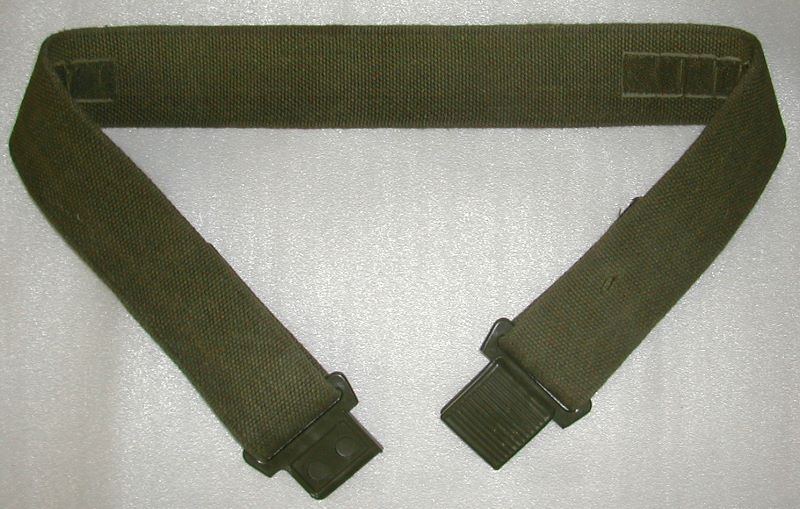
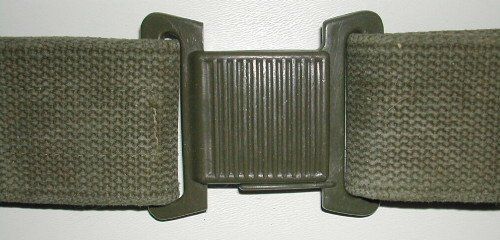

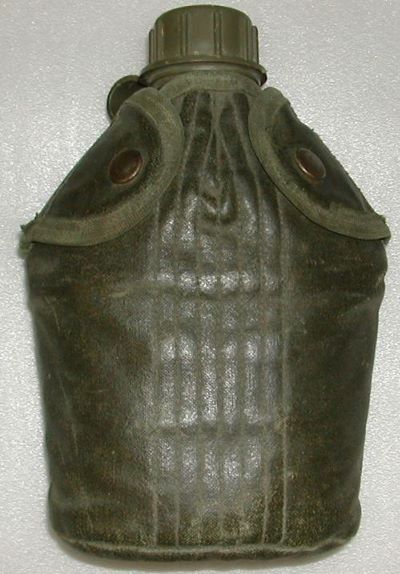

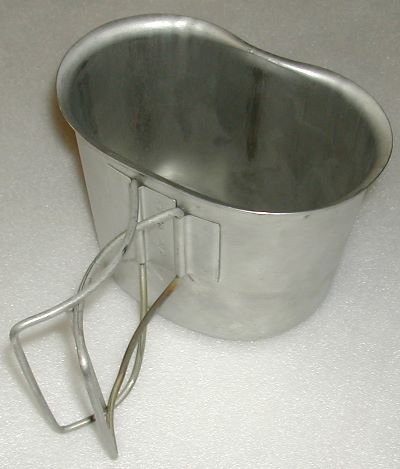



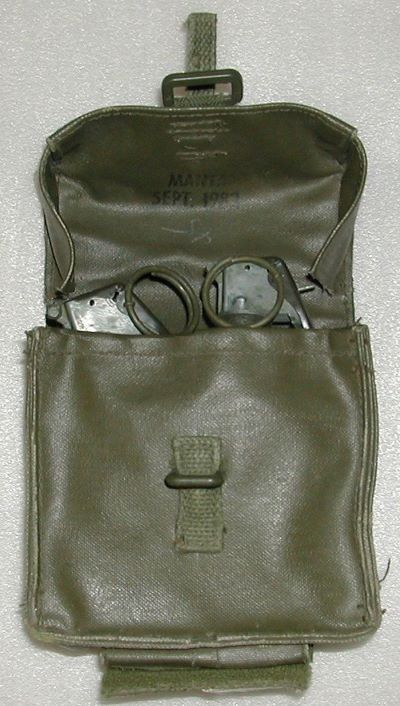


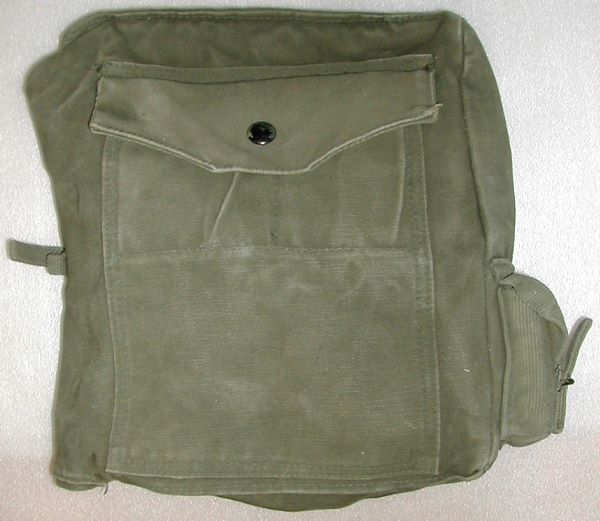
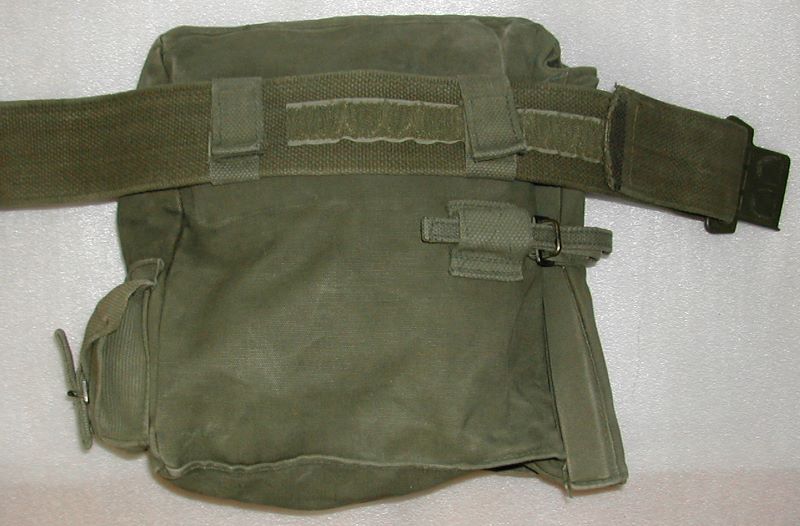
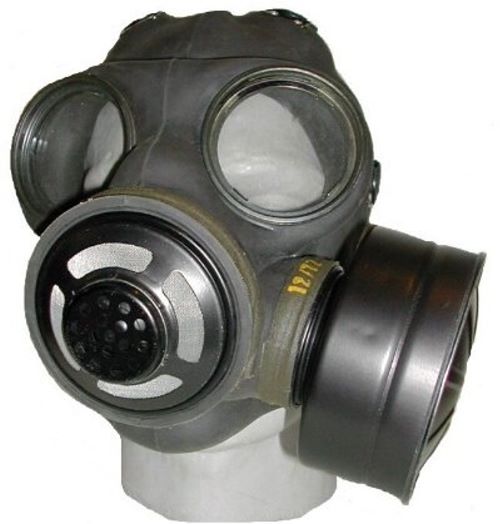
Initially, the we51 Binocular case and binoculars were employed with the 1964 Pattern web set, but in 1974 a new pattern of binocular and case was adopted. 7500 ELCAN 7 x 50 binoculars were produced between 1974 and 1977. These excellent binoculars remained in service until 2001. The case was equipped with a shoulder strap and slung over the shoulder or around the neck. The case could also be attached to the waistbelt.
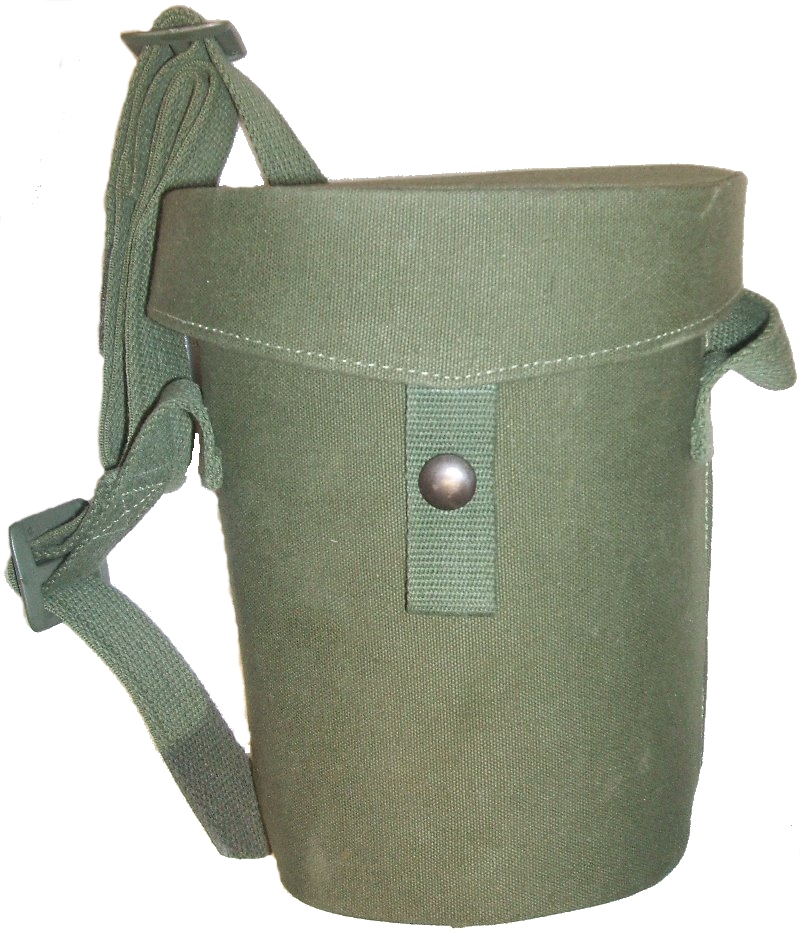




The WE '64 Compass Carrier was a new design accomodating (among other similar patterns) the Silva Type 15 (Ranger) Compass.
